All about white currants
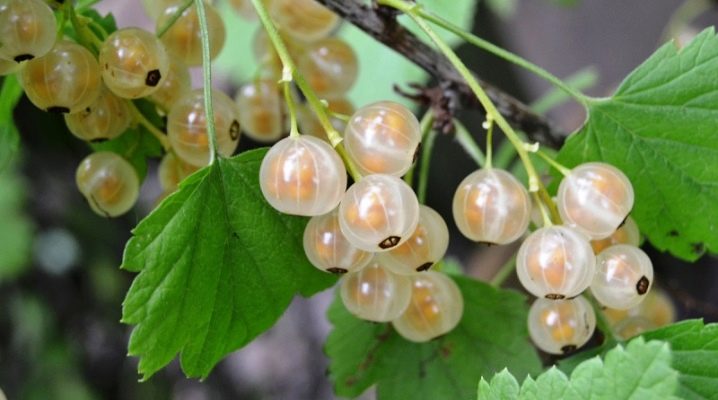
White currant is a healthy and tasty berry. The fruits of the plant are widely used in cooking, add sophistication and uniqueness to dishes. Berries are rich in vitamins, sugars, organic acids, pectins. They have very little ascorbic acid, but a lot of potassium and iron, which strengthen the cardiovascular system, improve blood circulation.
Currants can be given to children, since the berries are colorless, therefore, they are not allergens. In addition to berries, green leaves of the bush are used. They are added when salting vegetables, teas are prepared from fresh and dried leaves.
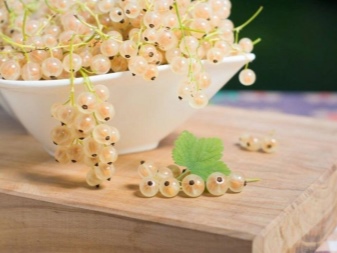

Description
White currant is a unique group of red currant varieties. This is an artificially bred variety belonging to the Gooseberry family. This perennial bush with green carved leaves in the form of three plates and a powerful root system, depending on conditions, can grow up to 2.5 m in height and width.
Flowering occurs in May. Small flowers with light yellow or greenish petals, collected in tassels. The berries ripen from June to July. They are transparent white in color with a barely noticeable yellow or cream tint, round in shape, with a diameter of 5 to 10 mm, collected in clusters. After ripening, the berries can hang on the bush for a long time without crumbling. White berries are not as tender as black ones, so they stay on the bush longer, until the first frost.
Bushes with ripe white clusters look very good in the garden. The berries are in perfect harmony with green foliage. The plant bears fruit every season... You can harvest a high yield by planting just a few bushes. White currants have a wonderful sweet and sour taste. The firm, juicy fruit is usually harvested in summer.
Whole bunches of berries can be used immediately or kept fresh in the refrigerator or frozen.
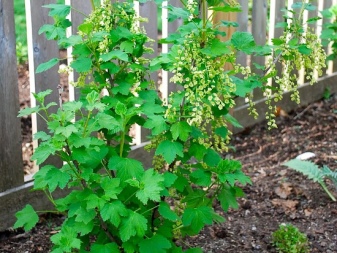

Varieties
Not a single garden plot is complete without currant bushes, mostly black and red berries. White currants are less common than black or red ones, so there are not so many varieties, but there is a choice.
- Uralsky – is considered the best variety of white currant. The variety was highly appreciated by the tasters. It is resistant to disease and frost, besides, it gives a good harvest. Currant with excellent taste, contains few seeds inside. This variety has a rich vitamin composition, which makes it a healthy food product.
- "White Fairy" - refers to the early varieties of white currant. It is very popular due to its low calorie content, delicious fruits and unpretentiousness. Diamond berries are stored for a long time and tolerate long-term transportation well.
- "Dessert" grade Is a large, juicy berry of a creamy yellow color. It takes root well throughout Russia, frost-resistant and not susceptible to fungal diseases.
- "Bayana" - the variety appeared as a result of crossing of two varieties: "Rote shpetlese" and "Red Lake". This is a late variety, the fruits of which grow up to three grams in weight, contain a large amount of pectins. The bunches with berries are long, dense, hanging down.
- "Belyana" - a famous variety. The berries are medium in size, all ripen together at once. They have a thin skin, therefore they are not stored for a long time, the variety is excellent for fresh consumption and blanks. The shrub is not picky about the composition of the soil, it grows both in the shade and in the sun.
- "Smolyaninovskaya" - grows well in central regions. The bush develops quickly, but is prone to thickening, it definitely needs pruning. Begins to bear fruit early.The transparent round white berries have a refreshing sweet and sour taste.
- "Versailles white" - this old variety of white currant originated in France. Forms ovaries early, but is sensitive to cold weather. Berries are light cream color, transparent. Sour taste, but very juicy.
- "Cream" - very high yield. Fruits are large in size, creamy in color. The bush is resistant to disease.
The choice of a variety depends on the climatic conditions and the preferences of the gardener.
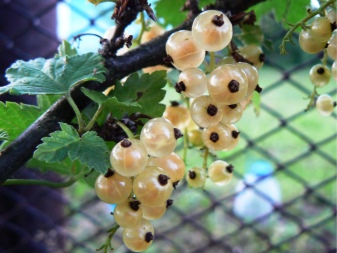
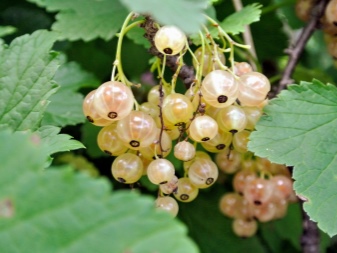
Landing features
White currant bushes can be grown in all regions. They easily bear fruit in any climate and in any area. The plant is very unpretentious, bears fruit regardless of heat or rain. The main thing in growing is to choose and plant the right seedlings.
Time to board
The best time for planting in the ground is autumn: in September or early October. Bushes growing in a container are planted in autumn and spring. It is necessary to transplant currants to a new place in late autumn or early spring. Old bushes do not tolerate transplanting well, so it is better not to touch them. Young bushes will perfectly take root in a new place, they can be transplanted.
First, you need to prepare the area where the bush will grow, dig up the ground, apply the necessary fertilizers. Dig up a bush by removing old dried and broken branches. Transfer the currants with a lump of earth to a new hole, dig in, water abundantly.

Selection of seedlings
The seedling is chosen with a well-developed root system. It should have up to 5 tree roots up to 25 centimeters long. The roots must be alive, not dry.


Landing place
A well-lit place is chosen for planting. The bush should receive a lot of heat and light, then the fruits will be sweet. The plant must be protected from the wind... Therefore, the shrub is often planted along the fence or near the walls of the house. Not every plant can tolerate being adjacent to other plantings. Some are fighting for food, while others have common pests and diseases. When planting white currants in open ground, it is necessary to take into account the compatibility of different types of plants with currants.
It is better not to plant bushes with large fruit trees. They have a developed root system, and there may not be enough water for currants, in addition, currants do not like shade, but the large crown of trees creates it.
Currants can be planted with calendula, onions, garlic, strawberries, honeysuckle, hazel. Some of these plants give off strong odors and repel pests.
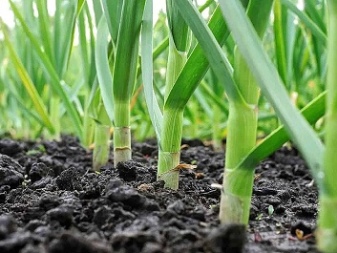
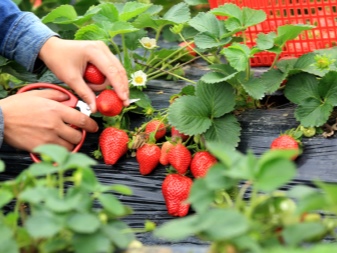
Soil preparation
In advance, a few days before planting, you need to dig up the area, remove weeds, you can add compost or humus. The soil is preferable fertile, moist, slightly acidic or neutral. If the soil is acidic, lime must be added. Be sure to add fertilizers, superphosphate or wood ash, mix thoroughly.
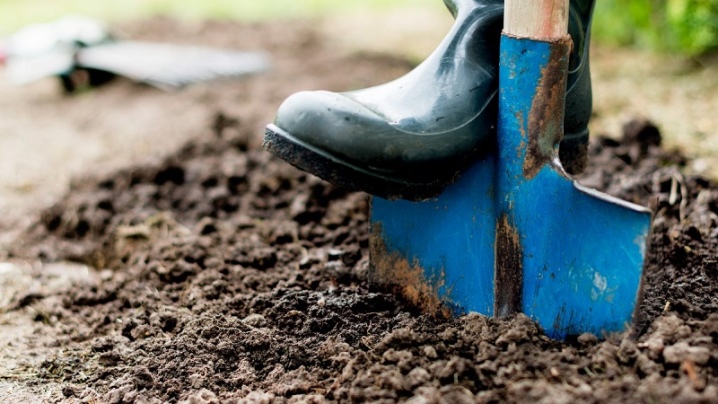
Landing scheme
A hole for white currants needs to be dug 35-45 centimeters deep. When planting, straighten the root system by removing rotten or dried roots. Plant the seedlings at a distance of at least one meter from each other, at an angle of 45 degrees, 40 centimeters deep. Fill the hole with earth, leaving no voids, compact the soil, water with a small amount of water. When the water is absorbed, cover with earth on top.

Care
Any plants need care, white currants are no exception.
Watering
White currants love moisture, but stagnation of water in the soil is unacceptable. When watering, the soil does not need to be heavily flooded with water. It is necessary to water the bushes from June, several times a week. A good time to water is morning and evening. If the bush does not have enough moisture, the berries will be small and tasteless. One 10 liter bucket is enough for one bush. It is better to water in specially dug holes near the root system. This will be effective watering of the plant, especially during the growing season.
To prevent a crust from forming, the earth is loosened once every 2-3 weeks.
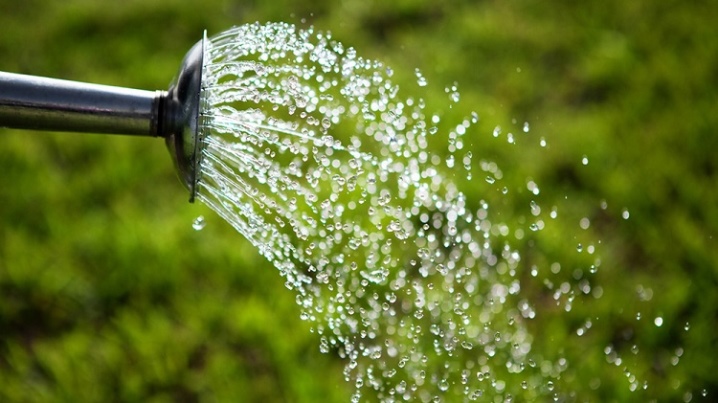
Top dressing
Top dressing of berry bushes can be carried out in spring or autumn when the crop is harvested. Nitrogen compounds or other fertilizers are applied to wet soil. A well-fed plant guarantees a good harvest of berries. Loosening of the soil is carried out between the bushes to a depth of 6-8 centimeters. The bushes are treated with copper sulfate or Bordeaux liquid. Processing is carried out both in spring and autumn. It is necessary to take care of currant bushes throughout the year. Planting care consists of following simple rules of agricultural technology.
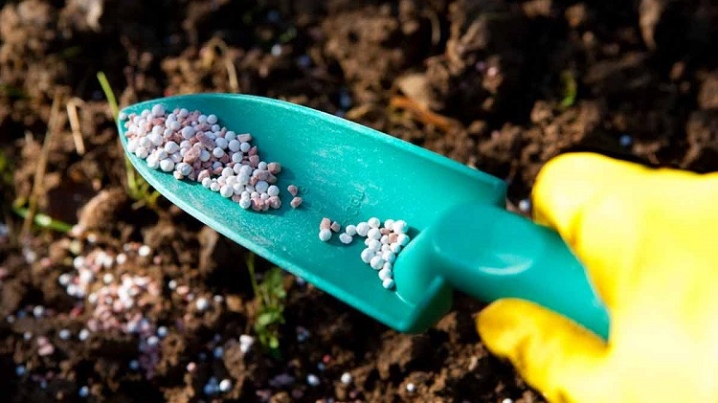
Pruning
It is better to start caring for the bushes in March. Cover the root system to retain moisture in the ground. In April, seedlings are sanitized. Cut out frostbitten, sick, broken branches and shoots.
If you do not cut the shrub, it will grow poorly.... Since the plant spends a lot of energy on the development of the root system, and there is no longer any strength on the aerial shoots, therefore, the shoots do not fully develop. The bushes are malformed and yield poor yields.
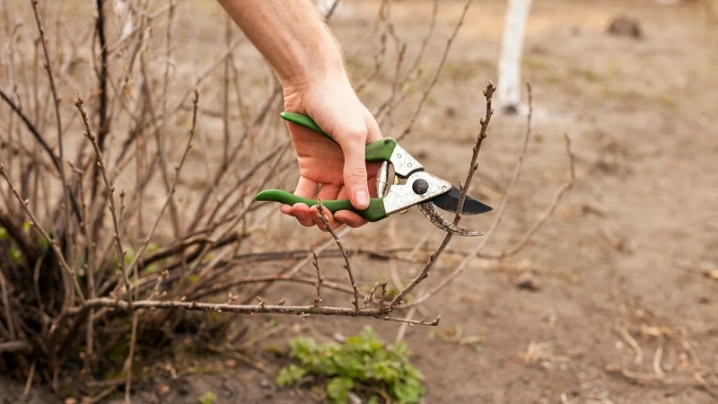
Preparing for winter
In order for the white currant bushes to winter safely and give a good harvest next summer, they must be prepared for the cold weather.... After the leaves fall and the juice stops moving, the bushes are cut off. Remove damaged, dry, old branches that do not bear fruit. Pruning should be carried out at the very base of the soil. After cutting, it is imperative to treat the cut sites with garden pitch to protect against diseases and pests. Leave as many young shoots as you need for the next year. Mulching the soil at the trunks of the bush. Peat, compost or humus can be used as mulch.
The twigs are bent to the ground, strengthened and covered. The timing and methods of preparing currants for winter are determined by the climate and weather conditions of the region where the area where the shrub grows is located. Since the climate of our large country is diverse, the methods and times of preparation for winter are different. If the winter is cold, then uncovered currant bushes may freeze out. Then there will be fewer buds and ovaries - this leads to a decrease in yield. In colder regions, the plant must be carefully covered. The bushes are cold-resistant plants, but you still need to shelter the currants from the cold. There are many ways to protect your plantings from cold temperatures.
Burlap, old clothes or other natural materials are suitable for covering branches. The branches are gathered together, wrapped with a protective layer, while they cannot be tightly pulled together - in a strong wind, they can break.
You can buy modern material in specialty stores, for example, polymer fabrics, they are breathable, and the temperature inside does not drop very low, or spunbond. These materials can be used multiple times.
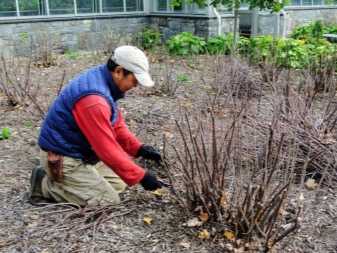
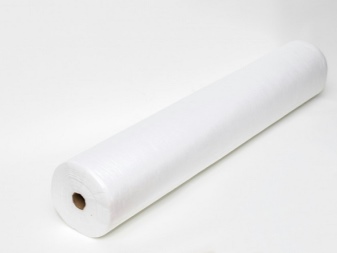
Reproduction
Reproduction of currants is a simple and at the same time responsible work. It is necessary to prepare garden tools and fertilizers for it in advance. White currants can be propagated in two ways.
Horizontal bends
This is the easiest way to breed, it does not require additional costs. If everything is done correctly, the branches will definitely take root. First you need to prepare the ground. To do this, under the bush, without damaging the roots, they form furrows about 10 centimeters deep. The healthiest and strongest branches are bent into the furrows. Using staples or thick wire, the branches are fixed in the ground. The tops are pinched, covered with moist earth.
Additionally, the bends can be strengthened from above with a load, it will press down the plant, and the branches will not slip out of the furrow. After the layers have hardened and form roots, they are separated from the main bush with pruning shears.
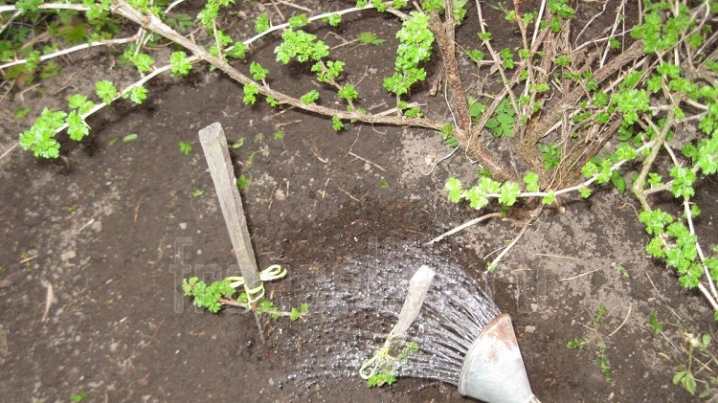
Cuttings
Cuttings are a common method for propagating currants. In this way, you can get a lot of seedlings in a short time. Plants are propagated in spring, when buds appear on the bushes.From a healthy bush, best of all from the lower branches, cuttings are cut 25-30 centimeters long, with a section of more than 1 centimeter.
Cuttings are planted in moistened prepared soil so that 2-3 buds remain on the surface, and 3-4 in the ground. After that, the soil is fertilized with organic matter and make sure that the soil does not dry out. Cuttings can be immediately planted in the ground, they can be prepared in advance, and planted later. To retain moisture, they are dipped in paraffin. In this form, the cutting can be stored for a long time in a cool place.
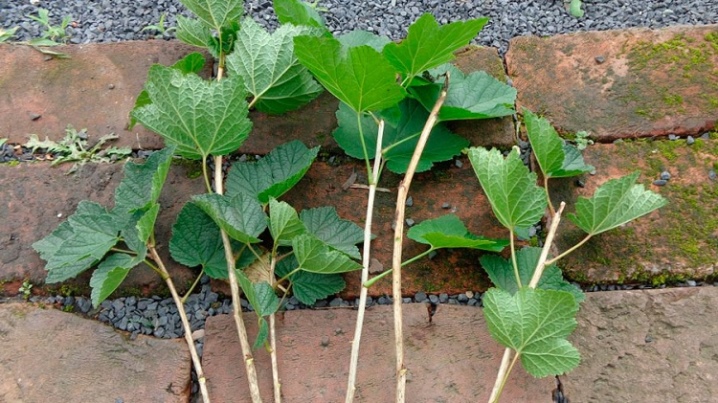
Diseases and pests
White currants are susceptible to various diseases. In the summer season, it is necessary to frequently inspect the plant in order to detect signs of the disease in a timely manner, to take action. If treatment is not started on time, the plant may die, and the disease will spread to other plantings. Diseases are divided into fungal and viral.
Fungal diseases occur in the summer.
- Small spots of red and brown color appear on the leaves... In the middle of this spot, a tuberosity forms and begins to capture the entire leaf of the plant. The leaves gradually dry up and fall off. This disease is called anthracnose.
- Cercosporosis... Here there are brown spots with a light middle, along the edge of the spot there is a dark canvas. A plaque appears on both sides, the leaves dry and fall off.
- Powdery mildew there are two types: American and European. The disease affects leaves, berries and shoots. She is recognized by a gray coating, which gradually darkens. The disease strongly affects the bushes. The fungus can survive the winter on fallen leaves, and in the spring settle on other seedlings. Spores are carried by wind and insects.
- Rust happens:
- columnar - small gray spots with brown edging;
- goblet Is a colony of orange dots on currant leaves.
- Septoria (white spot) - a lot of light spots with brown edging.
- Gray rot - affects leaves and bark, looks like brown spots.
- Nectric drying – the appearance of orange dots on the branches of the bush. The disease is dangerous because it stops the growth of shoots and causes their death.
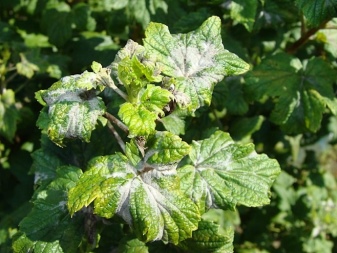
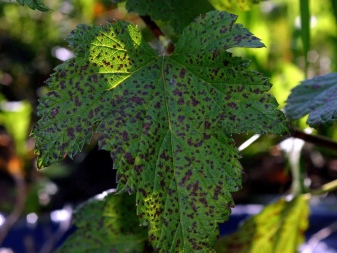
Fungal diseases are very insidious, spores spread quickly and tolerate severe cold very persistently. Therefore, it is necessary to treat immediately, as the first signs noticed. Fungal diseases must be treated with Bordeaux liquid. Spray bushes and ground should be in spring and autumn. In the spring - when there are still no flowers, and in the fall - when the harvest is being harvested.
A viral disease - terry - looks like irregular leaves and inflorescences. The inflorescences dry up without forming berries. This disease can pass unnoticed, insects can transfer the virus to neighboring plantings. It is difficult to fight viruses, at the first sign it is better to dig up and burn the bush. At this place, it is not advised to plant currants.
It is necessary to follow all the rules of care, to carry out preventive measures in time, and then the diseases will not cause much damage. Irreparable harm to white currants can be caused not only by diseases, but also by dangerous pests. They are carriers of many diseases. To successfully deal with them, you need to accurately calculate them.
In nature, there is a fairly large number of insects that infect plants. Many of them are rare.
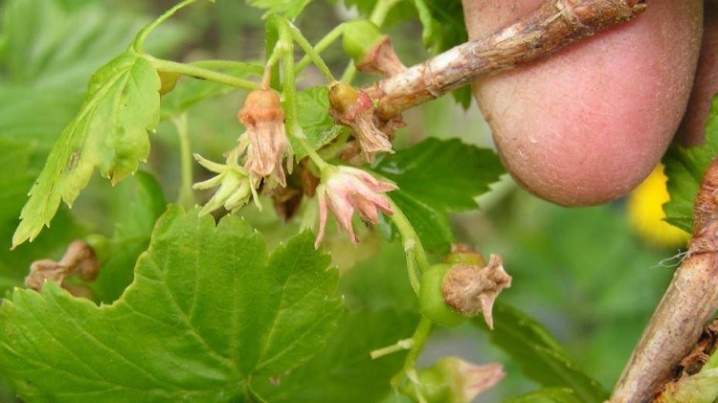
Consider the most famous pests.
- Aphid... Small but aggressive yellow or green insect, about 6 millimeters in size. There are many types, all of them are dangerous. Eggs laid in summer hibernate on twigs, with the arrival of warm days the larvae crawl out. They are too gluttonous, cluster from below on the leaf and feed on the sap of the plant. As a result, red-brown tubercles appear, the leaves curl, dry out. Aphids multiply rapidly and cause great harm to the plant. Aphids are easy to spot. Before flowering, it is necessary to treat the bushes with chemicals "Aktara", "Fufanon", "Vofatox" and others.
- Glass-maker - a small butterfly with transparent wings, lays eggs in broken and twisted branches.It is difficult to get rid of this, since it is not visible inside the branches, and the larvae eat the bush. The first year of this pest can not be seen. Over time, you will notice that the leaves have become small and the berries are small. Since the caterpillar is inside the plant, it is impossible to remove it using chemicals. It is necessary to remove damaged branches.
- Kidney mite - the most dangerous and widespread pest. It looks like a small white worm. It settles in the kidneys and multiplies instantly. In a short time, it can destroy many currant bushes. You can notice it if you pay attention to the kidney - it increases in size and becomes like a small head of cabbage. The most effective remedy is to scald the kidneys with boiling water.
- Spider mite - harms currant leaves and flowers. A thin web is a characteristic sign of the appearance of this pest. It is easy to notice it, as the tick entangles leaves, clusters, twigs with its cobwebs. You can get rid of it in a simple way - it is good to water the bush with water. If this does not help, chemicals should be used.
- The kidney moth is a butterfly. The butterfly itself does not cause damage, its caterpillars are harmful, which come out of their cocoons at the moment the currant buds open. Caterpillars are green, up to 1 centimeter long. If the bush looks like after a frostburn, it means that it was attacked by the caterpillars of the kidney moth. All bushes must be sprayed with chemical solutions before bud break.
- Currant gall midge - the larvae of a small mosquito parasitizing on currant leaves. They make moves in green shoots and leaves, after which they dry up and break. They also fight this pest with chemicals.
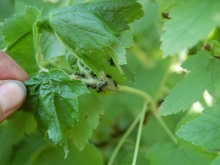

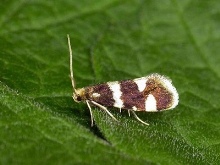













The comment was sent successfully.